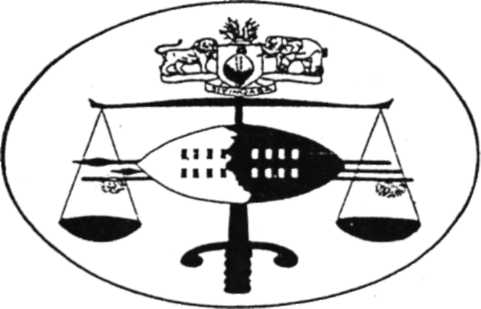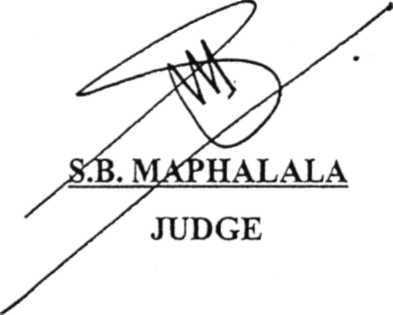
1
REX Vs NKOSINATHI DLAMINI Criminal Case No. 150/2002


Coram For the Crown For the Accused S.B. MAPHALALA - J MRS S. WAMALWA IN PERSON
JUDGMENT 25/10/2004 The accused person is charged with the crime of rape. It is alleged by the Crown that upon or about 22" February 2001, and at or near Ludzeludze area in the district of Manzini, the accused did wrongfully and intentionally have unlawful sexual intercourse with Zonke Dlamini without her consent, and did thereby commit the crime of rape. The Crown further alleges that the rape is accompanied by aggravating circumstances as envisaged under Section 185 (bis) of the Criminal Procedure and Evidence Act 1938, in that: a) At the time of the commission of this offence, complainant was a female child of eleven (11) years; and
b) At the time of the commission of the crime, complainant was a virgin. The Crown furthermore, alleges on the alternative that the accused is guilty of contravening Section 3 (1) of the Girls and Women's Protection Act No. 39 of 1920. The accused person is conducting his own defence and has pleaded not guilty to the charges levelled against him. The Crown is represented by Mrs. Wamalwa. A summary of the Crown evidence which included that of the complainant, her employer Zodvwa Maseko, one Zama Khumalo who apprehended accused person and the investigating officer 3952 Constable M. Masilela was to the effect that on the day in question complainant on her way back to the shop when she was accosted by the accused who grabbed her and led her to a nearby forest. Accused forced the complainant into a field where he forced her to have sexual intercourse with him. When accused had finished having sexual intercourse with her the accused ordered her to proceed home while he fled into the bush. The complainant reported the matter at home to her employer PW2 Zodvwa Maseko. PW2 related to the court that PW1 (complainant) was her maid. On the 22nd February 2001, she sent her to a shop. PW1 went to the shop but came home crying. PW1 reported that she had been raped and she saw that complainant was wet with semen on the dress she was wearing. The complainant had thorns on her head and her dress was soiled. The complainant then led her to the scene of crime. She reported the matter to the police. She also took the complainant to RFM Hospital for examination. The third Crown witness PW3 Zama Khumalo told the court that he was one of the people who apprehended the accused person after they were asked by PW2 to look around for the perpetrator. The witness related as to how they went about looking for the culprit with others including one Papa Masangane. He told the court that they questioned the accused person about the rape of PW1 and the accused person stated that he was tempted by the devil. Accused took this witness and other people to the scene of crime. Accused was later handed over to the police. PW4 3952 Constable Makhosini Maseko related how he went about the investigations in this case.
In nis defence the accused person gave a lengthy account under oafti. In essence he denied ever committing this offence and that he does not even know the complainant. It was contended for the Crown that a case has been proved against the accused person beyond a reasonable doubt. It was argued that the evidence of the complainant has been corroborated by the evidence of PW2 and PW3 in all material respects. On the absence of medical evidence of penetration the Crown relied on the dicta in the Court of Appeal case of The King vs Abraham Ngwenya and another Criminal Appeal Case No. 33/96 (unreported) where the following was stated by Leon JA (as he then was): and I quote: "The Magistrate quite rightly was highly critical of this omission and of course in rape cases medical evidence should always be led or a report handed in by consent wherever that is possible. However, the failure to lead medical evidence does not, in my view, mean that such failure must inevitable lead to the conclusion that is fatal to a conviction. In fact when this point was put to counsel for the Appellant he was constrained to concede the correctness of that view. There is no rule of law, which requires the court to refuse to convict an accused in the absence of corroborative evidence of penetration. Caution must be exercised because rape cases are easy to lay and difficult to disprove. But even where there is no corroboration properly so called of the actual penetration there may be direct and circumstantial evidence which cumulatively points in that direction and that direction only ..." (my emphasis). The accused on the other hand pointed out a number of contradictions in the Crown's evidence and contended that at least he was entitled to the benefit of the doubt. I have considered the evidence adduced before me in toto and the submissions made for and against a conviction in this case and I have come to the considered opinion that on the facts the accused person is entitled to the benefit of the doubt. The absence of the medical report, in my view has dealt a death knell to the Crown case. In casu there is no direct and circumstantial evidence, which cumulatively points in that direction and that direction only as mentioned in Abraham Ngwenya (supra). The evidence of the "soiled dress" might have been this evidence in pointing in that direction and that direction only. However, the dress was not produced by the Crown as evidence.
Further, it appears to me that the contradictions in the Crown evidence as pointed out by the accused person in his submissions put to question the credibility of the witnesses, more particularly that of the complainant. In sum, it would be unsafe to convict the accused on the evidence presented and therefore I give him the benefit of the doubt. In the result, the accused is found not guilty and is acquitted forthwith.